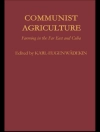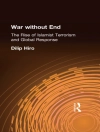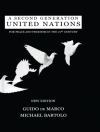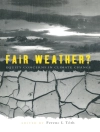Comprising 60.3 percent of the world’s 7.2 billion population, Asia is an enigma to many in the West. Hugely dynamic in its demographic, economic, technological and financial development, its changes are as rapid as they are diverse.
The SAGE Handbook of Asian Foreign Policy provides the reader with a clear, balanced and comprehensive overview on Asia’s foreign policy and accompanying theoretical trends. Placing the diverse and dynamic substance of Asia’s international relations first, and bringing together an authoritative assembly of contributors from across the world, this is a reliable introduction to non-Western intellectual traditions in Asia.
VOLUME 1:
PART 2: Themes
PART 3: Transnational Politics
PART 4: Domestic Politics
PART 5; Transnational Economics
VOLUME 2:
PART 6: Foreign Policies of Asian States
Part 6a: East Asia
Part 6b: Southeast Asia
Part 6c: South & Central Asia
Part 7: Offshore Actors
Part 8: Bilateral Issues
Part 9: Comparison of Asian Sub-Regions
Зміст
Volume 01
Introduction – Takashi Inoguchi
Part 1: Theories
Chapter 1: The Duel Encounter: Parallels in the Rise of China (1978-) and Japan (1868-1945) – Barry Buzan
Chapter 2: Non-Western Constructive – Yong-Soo Eun
Chapter 3: Non-Western Realist – Zheng Yongnian & Liu Boijian
Chapter 4: Foreseeing Perspective (Voir pour Prévoir) – Takashi Inoguchi
Chapter 5: A Rational Choice Analysis on Japan′s Trade Policymaking – Kaoru Ishiguro
Chapter 6: Asia′s Contribution to IRT – Takeshi Uemura
Chapter 7: Beyond West and East: IR intellectual traditions? – Kosuke Shimizu
Part 2: Themes
Chapter 8: East Asian Migrations: An Overview – Tony Fielding
Chapter 9: Migration in Northeast Asia: Human Development, Human Security, and Foreign Policy Consequences – Tsuneo Akaha
Chapter 10: From Global Issues to National Interests: The Role of Non-State Actors in Redefining Japanese Diplomacy – Jennifer Chan
Chapter 11: Civil Conflict and Third-part Intervention in the Asia-Pacific – Yuichi Kubota
Chapter 12: Asian Cybersecurity – Motohiro Tsuchiya
Part 3: Transnational Politics
Chapter 13: Citizens and Regimes – Takashi Inoguchi & Lien Le
Chapter 14: Global and Regional Organisations – Edward Newman & Ryan Hartley
Chapter 15: Asia and International Peace Support: Limits of Institutionalization – Chiyuki Aoi & Yee-Kuang Heng
Chapter 16: Asian Subnational Governments in Foreign Affairs – Purnendra Jain
Chapter 17: Territorial Disputes in Asia: Colonialism, Cold War and Domestic Politics – Alexander Bukh
Chapter 18: The Conflict in Afghanistan: Interlocking Strategic Challenges as a Barrier to Regional Solution – Ankit Panda & Srinjoy Bose
Part 4: Domestic Politics
Chapter 19: The Influence of Public Opinion on Foreign Policy in Asia: The Case of Japan – Paul Midford
Chapter 20: Diplomats, Military and Intelligence Officers: From stovepipes to integration in Japan′s security policy – Ken Kotani
Chapter 21: Domestic and Foreign Policy Making in China – Kerry Brown
Chapter 22: An Evidence-Based Typology of Asian Societies: What Do Asian Societies Look Like from the Bottom Up instead of Top Down? – Takashi Inoguchi
Part 5: Transnational Economics
Chapter 23: Geo-economic Contest in Southeast Asia: Great Power Politics through the Prism of Trade, Investment and Aid – Titli Basu
Chapter 24: Foreign Aid and Asian Donors – Brittany L. Morreale & Purnendra Jain
Chapter 25: BRICS: Towards Institutionalization – Oliver Stuenkel
Chapter 26: Asia and the United Nations – Sebastian von Einsiedel, David M. Malone, & Anthony Yazaki
Volume 02
Part 6: Foreign Policies of Asian States
Part 6a: East Asia
Chapter 27: Chinese Foreign Policy Under Xi Jinping – Kerry Brown
Chapter 28: Overviews of Japanese Foreign Policy through Three Lenses: Realism, Liberalism and Constructivism – Tomohito Shinoda
Chapter 29: South Korea′s Foreign Policy in the 21st Century – Jong-Yun Bae
Chapter 30: The History of North Korean Diplomacy: A Non-isolated Country with Expanding Relations – Satoru Miyamoto
Chapter 31: Taiwan′s Foreign Policy: Evolution, Challenges and Opportunities – Hsin-Huang Michael Hsiao, Alan Hao Yang, & Liang-Chi Russell Hsiao
Part 6b: Southeast Asia
Chapter 32: Thailand′s Foreign Policy in the post-Cold War Era: From Potentials to Disarrays – Pongphisoot Busbarat
Chapter 33: Vietnam′s Foreign Policy – Carlyle Thayer
Chapter 34: Philippine Foreign Policy: Back to Square One? – Carolina Hernandez
Chapter 35: Singapore as a Small State: Surmounting Vulnerability – Lam Peng Er
Chapter 36: Myanmar Foreign Policy: Principles and Practices – Maung Aung Myoe
Part 6c: South & Central Asia
Chapter 37: Indian Foreign Policy: The Quest for Greatness – Sreeram Chaulia
Chapter 38: Sri Lankan Foreign Policy – Peshan R. Gunaratne
Chapter 39: Bangladesh Foreign Policy: Last 45 Years – Imtiaz Ahmed
Chapter 40: A Quarter Millennium of Nepal′s Foreign Policy: Continuity and Changes – Uddhab Pyakurel
Chapter 41: Afghanistan′s Foreign Policy – Kaushik Roy
Chapter 42: Developmental State and Foreign Policy in Post-Karimov Uzbekistan – Timur Dadabaev
Part 7: Offshore Actors
Chapter 43: Iran′s Foreign Policy – Mehdi Mozaffari
Chapter 44: Turkish Foreign Policy – Ayse Zarakol
Chapter 45: Israel′s Foreign Policy – Meron Medzini
Chapter 46: American Foreign Relations and East Asia – Bruce Cumings
Chapter 47: Australian Foreign Policy – Michael Wesley
Part 8: Bilateral Issues
Chapter 48: India-Pakistan Relations – Rohan Mukherjee
Chapter 49: India and Japan: Friendship Rediscovered – Purnendra Jain
Chapter 50: Will India Become China′s Africa – Jonathan Holslag
Chapter 51: China-Japan Relations: Balance of Soft Power – Takeshi Uemura
Part 9: Comparison of Asian Sub-Regions
Chapter 52: The East Asian Peaace – Stein Tonnesson
Chapter 53: The ASEAN Political-Security Community and Its Dilemmas – Ayako Masuhara
Chapter 54: Neighbors Without Borders – Regional Integration in South Asia – Aparna Pande
Про автора
Political Science, University of Tokoyo, Japan.












